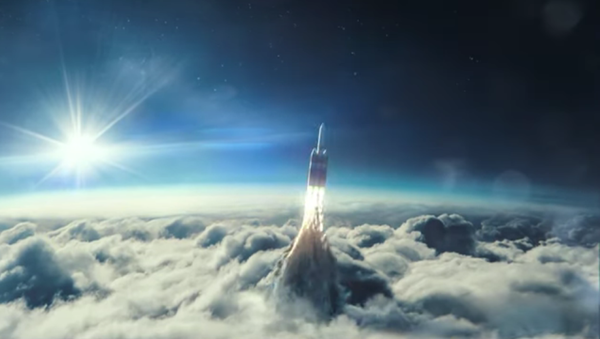Lt. Gen. John Thompson, commander of the USSF’s Space and Missile Systems Center (SMC), said at a recent forum that the service would continue to seek larger budgets in the coming years, confident that lawmakers and Pentagon planners alike will support a rapid expansion of space capabilities.
“If you thought space was going to be a priority in a kind of one-and-done way, that’s not clearly what’s been happening, right?” Thompson pointed out at the Air Force Association’s Schriever Space Futures Forum last week, according to C4ISRNET. “Three years in a row, budgets have gone to the Hill with foundational changes to the space budget.”
“We plussed up the space portfolio significantly to address users’ needs,” Thompson said about the fiscal year 2022 budget proposal still in the works. “I can’t give you the exact dollars and obviously it’s all pre-decisional. But the DMAG [Deputy’s Management Action Group] and many other DoD [Department of Defense] leaders are clearly sending a message that across the [Future Years Defense Program], the importance of the space enterprise is growing and needs to grow further.”
For some perspective, in fiscal year 2021, the Department of the Air Force boosted its budget for the USSF some $800 million from the year prior, to $15.4 billion. That’s a lot of money for a service branch officially founded in December 2019 and sporting just 16,000 uniformed and civilian personnel. That’s about $962,500 spent per person.
Earlier this month, amid the ongoing dispute over the November 3 US presidential election results, Joshua Huminski, director of the Mike Rogers Center for Intelligence and Global Affairs’ National Security Space Program, told SpaceNews that whether Donald Trump or Joe Biden becomes the nation’s next president, “The mission and threat will continue on and perhaps accelerate” in the coming years.
“I think the important thing to consider is that the intellectual foundation of the Space Force existed well before President Trump - the need for a separate culture, space as a warfighting domain and the threat from Russia and China on orbit,” Huminski added.
The new service is taking over the space-based assets separately managed by each service branch, as well as taking responsibility for a slew of new satellites, weapons systems, and defensive efforts like counter-jamming abilities - ostensibly to better protect them from the increased threat of Russian and Chinese interference or intercept. However, Beijing and Moscow alike have denied any intent to militarize space and have accused Washington of perpetrating that which it seeks to prevent.
Last month, the US Air Force Research Laboratory’s Space Vehicles Directorate opened its Deployable Structures Laboratory at Kirtland Air Force Base, New Mexico, a facility for testing out new materials and designs for space structures before deploying them into orbit. That could include a slew of new ballistic missile early warning satellites as well as structures such as a proposed solar energy collector that would beam its energy down to Earth to provide electrical power.
The Space Force also has offensive weapons in the form of the Counter Communications System, an Earth-based array that can jam enemy satellite transmissions - something SMC combat systems branch materiel leader Lt. Col. Steve Brogan said at its January unveiling “puts the 'force' in Space Force and is critical for Space as a warfighting domain.” Its next iteration, dubbed “Meadowland,” will see the technology further miniaturized and multiplied into a vast network of offensive jamming capabilities.



